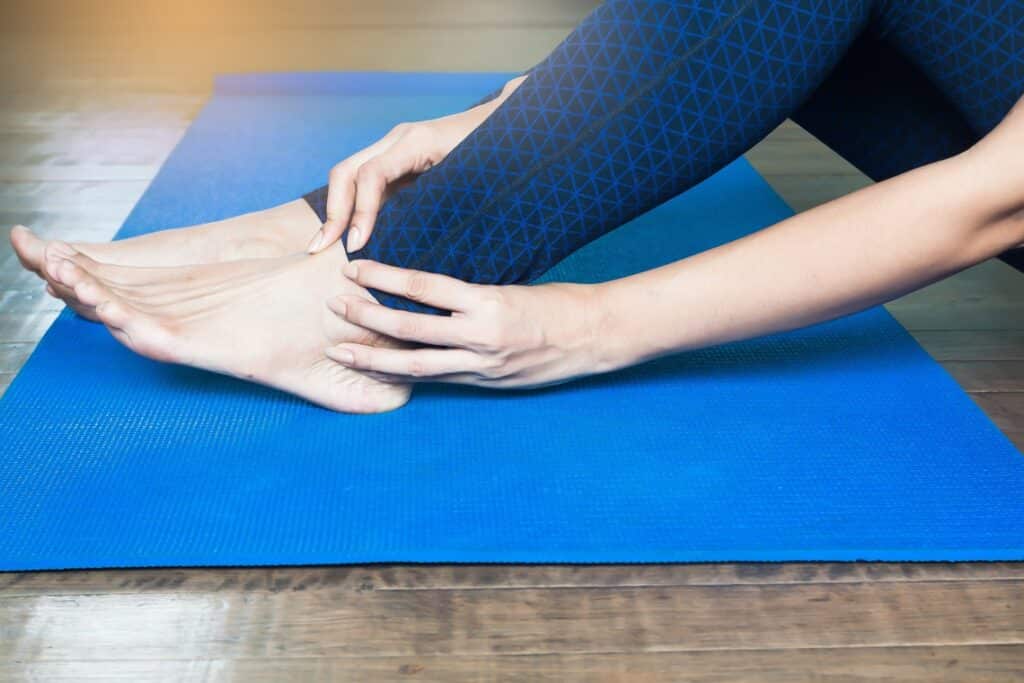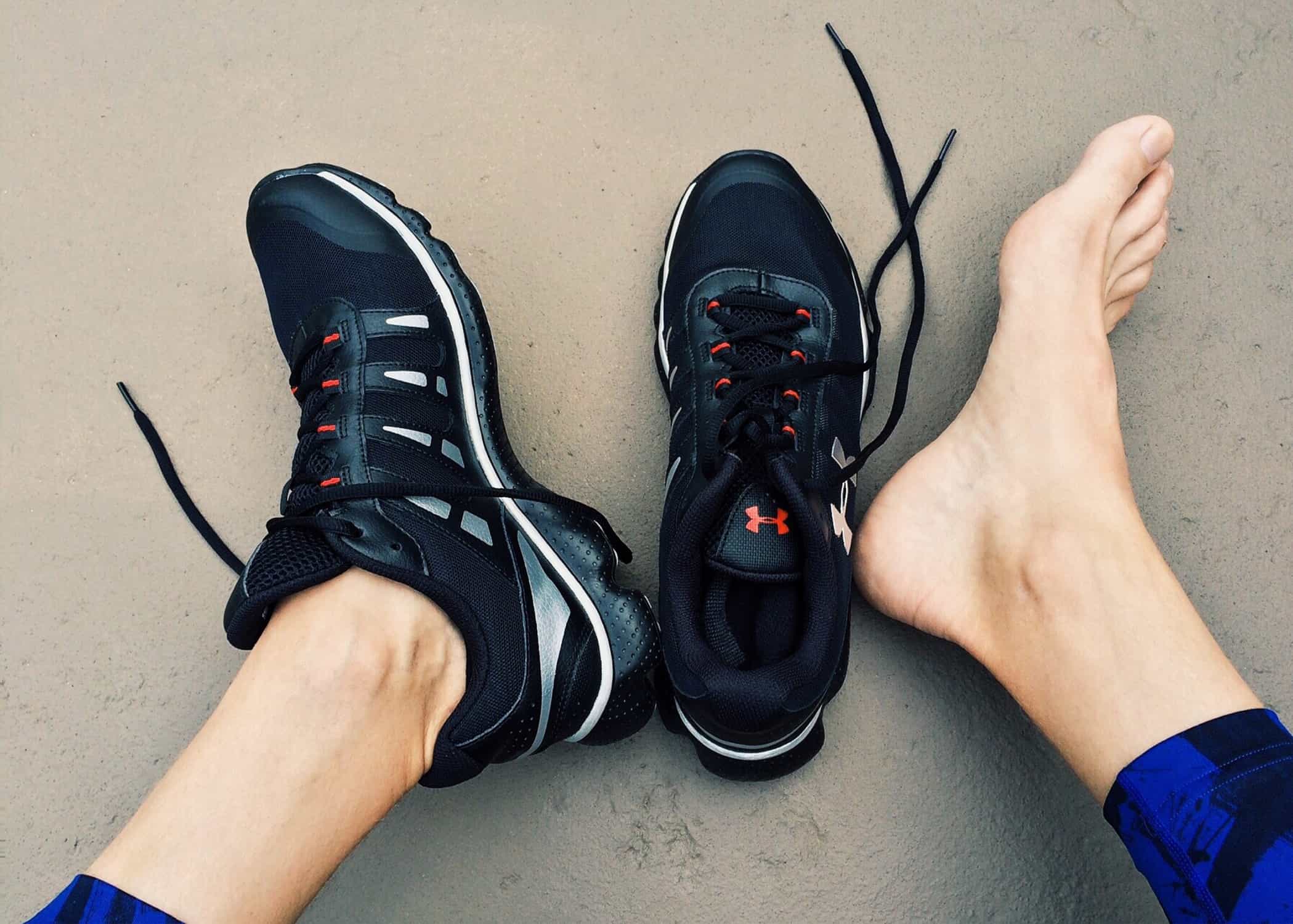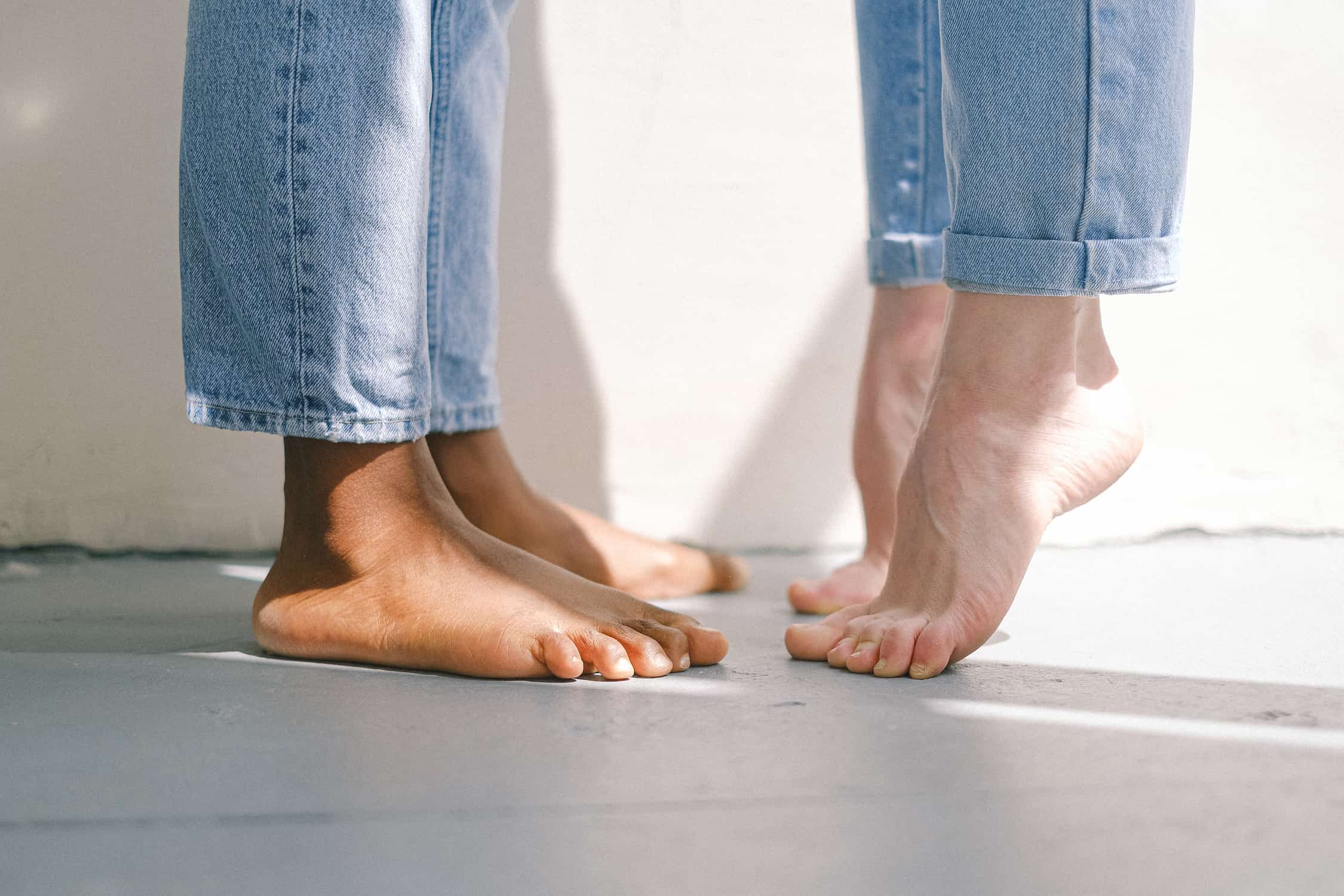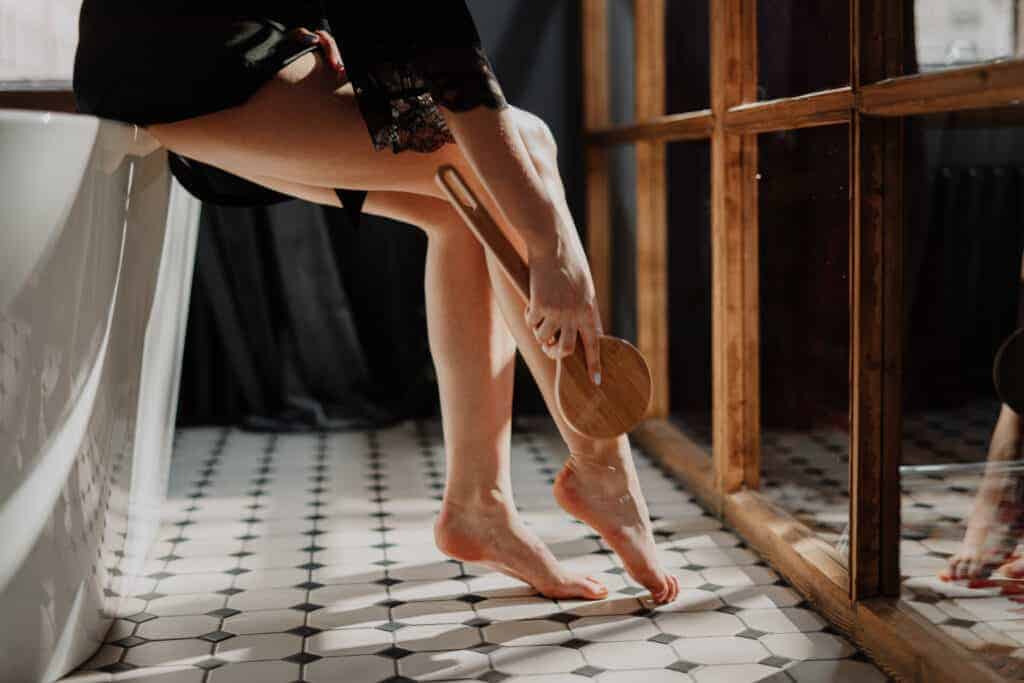Fluid-filled sacs called bursae surround your joints to absorb stress and reduce friction.
In bursitis, these sacs become inflamed and painful.
Retrocalcaneal bursitis is an inflammation of the bursae in your heel.
It’s the most common type of heel bursitis, affecting the bursa under the Achilles tendon.
That’s why the condition is also known as Achilles bursitis. It’s often grouped with an inflammation of the bursa over the tendon, known as superficial Achilles bursitis.1C. N. van Dijk, M. N. van Sterkenburg, J. I. Wiegerinck, J. Karlsson, and N. Maffulli. Terminology for Achilles tendon related disorders, Knee Surg Sports Traumatol Arthrosc. 2011
Symptoms of Retrocalcaneal Bursitis
What does retrocalcaneal bursitis feel like?
The main symptom of retrocalcaneal bursitis is pain in the back of your heel.
The pain might get worse when you’re running uphill, as this puts even more pressure on the bursa.

Standing on your toes, calf-targeting exercises, and pressing on the area might also increase the pain.2P. A. Pękala, et al. The Achilles tendon and the retrocalcaneal bursa
, Bone Joint Res. 2017
Other symptoms include:
- Swelling and redness on the back of your heel.
- Warmth and tenderness in the area.
- Stiffness and loss of movement.
The condition can also start more subtly. For instance:
- Shoes might become uncomfortable.
- The pain might appear when you’re first beginning an activity (e.g., at the start of your run.)
- You might hear a crackling sound when you flex your feet.
What Causes Retrocalcaneal Bursitis?
The bursae are there to protect your joint and help the tendon glide smoothly.
When you contract the calf muscle (e.g., during walking or running uphill,) the Achilles tendon rubs against the bursa.

If you overwork the joint and cord, the friction irritates the bursa, causing it to become inflamed.3Christopher H. Williams; Britni T. Sternard. Bursitis, StatPearls Publishing; 2020
Common causes of heel bursitis include:
- Overtraining or suddenly increasing physical activity.
- Not warming up properly before a workout.
- Ill-fitting shoes with a restrictive heel counter.
- Walking in high-heels for long periods.
- Haglund deformity, a bony growth at the back of your heel (which puts more pressure on the bursa and tendon.)
- Altered joint axis, leading to overuse of the Achilles tendon.4Claudia A Reule, Wilfried W Alt, Heinz Lohrer, Harald Hochwald
. Spatial orientation of the subtalar joint axis is different in subjects with and without Achilles tendon disorders
, Br J Sports Med
. 2011
To prevent bursitis, make sure you wear comfortable shoes (especially for running and walking long distances,) warm up with a few simple heel rolls, and rest if you feel any pain in the area.
Retrocalcaneal Bursitis Vs. Achilles Tendonitis
Both of these conditions cause pain at the back of the heel, and they’re related to overusing the tendon and joint.
Even more confusingly, retrocalcaneal bursitis and Achilles tendonitis can happen at the same time.
What brings them apart?
Retrocalcaneal bursitis is an inflammation of the fluid-filled sacs around the tendon.
Achilles tendonitis is an inflammation of the tendon itself.5Takeshi Suzuki, Yuka Hidaka, and Yu Seri. Retrocalcaneal Bursitis Precedes or Accompanies Achilles Tendon Enthesitis in the Early Phase of Rheumatoid Arthritis, Clin Med Insights Arthritis Musculoskelet Disord. 2018

The pain associated with Achilles tendonitis is slightly lower, at the insertion spot of the tendon. It gets worse if you press at the back of your heel bone. Bursitis pain, on the other hand, gets more robust if you press on the sides.
Your doctor might recommend additional imaging (bursitis ultrasound, CT, or MRI) to confirm the diagnosis.
Does Retrocalcaneal Bursitis Go Away?
Yes, the inflammation can subside on its own. To help your heel recover, avoid intensive activities, and rest your foot in an elevated position.
How Long Does It Take for Heel Bursitis to Heal?
Recovery can take anywhere from a few days to eight-nine weeks.
The excellent news is Achilles bursitis responds very well to simple home treatments. To speed up the healing process:
- Avoid all activities that put pressure on the calf/heel. Replace them with low-impact exercises like swimming instead.
- Elevate your heel and place ice packs for 15-20 minutes every day to reduce the inflammation and pain.
- Switch to open-backed shoes with slightly elevated heels or consider heel cups and wedges.
Should You Massage Heel Bursitis?
While some therapists suggest massage techniques for bursitis, it’s best to avoid them altogether.

Pressing and rubbing on the inflamed area will only increase the irritation and slow down the recovery process. Instead, try massaging the region over your heel to improve circulation and promote healing.
Treating Retrocalcaneal Bursitis
If home remedies don’t help, you can reduce the pain with over-the-counter painkillers like ibuprofen (Advil) and acetaminophen (Tylenol.) These medications have an anti-inflammatory action, helping your heel recover faster.

, Ann Rheum Dis. 1988
If your bursa doesn’t improve in six months to a year, your practitioner might recommend surgery.
Contact your doctor if your pain is sharp if it gets worse quickly, or if you develop a fever.
